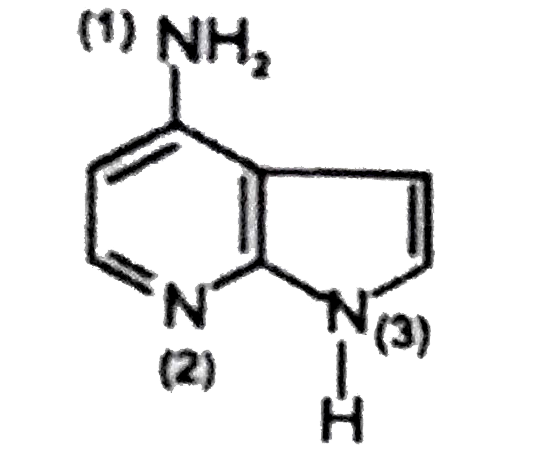Of the following groups of organisms, which is the most evolutionarily advanced, with more complex body structure ?
Roundworms
Cnidaria
Sponges
Flatworms
The correct Answer is:A
To determine which group of organisms is the most evolutionarily advanced with a more complex body structure, we will analyze the four options provided: roundworms, cnidaria, sponges, and flatworms.
1. Identify the Groups: The four groups of organisms we need to evaluate are:
- Roundworms (Phylum Nematoda)
- Cnidaria (Phylum Cnidaria)
- Sponges (Phylum Porifera)
- Flatworms (Phylum Platyhelminthes)
2. Analyze Roundworms:
- Roundworms have a complete digestive system, which means they possess two openings: a mouth and an anus. This allows for a more efficient digestion process.
- They exhibit bilateral symmetry, which is a characteristic of more complex organisms.
3. Analyze Cnidaria:
- Cnidarians have an incomplete digestive system, meaning they only have one opening for both ingestion and egestion.
- They display radial symmetry, which is typical of simpler organisms.
4. Analyze Sponges:
- Sponges lack a true digestive system altogether; they filter feed through their porous bodies.
- They exhibit asymmetrical body plans, indicating a lower level of complexity.
5. Analyze Flatworms:
- Flatworms also have an incomplete digestive system, with only one opening (mouth).
- They possess bilateral symmetry, but their overall body structure is simpler compared to roundworms.
6. Compare the Complexity:
- Roundworms are the only group with a complete digestive system and bilateral symmetry, indicating a higher level of complexity.
- Cnidaria, sponges, and flatworms all have simpler body structures and incomplete digestive systems.
7. Conclusion:
- Based on the analysis, roundworms are the most evolutionarily advanced group among the options provided due to their complete digestive system and bilateral symmetry.
Final Answer:
The most evolutionarily advanced group with a more complex body structure is roundworms.
- Roundworms (Phylum Nematoda)
- Cnidaria (Phylum Cnidaria)
- Sponges (Phylum Porifera)
- Flatworms (Phylum Platyhelminthes)
- Roundworms have a complete digestive system, which means they possess two openings: a mouth and an anus. This allows for a more efficient digestion process.
- They exhibit bilateral symmetry, which is a characteristic of more complex organisms.
- Cnidarians have an incomplete digestive system, meaning they only have one opening for both ingestion and egestion.
- They display radial symmetry, which is typical of simpler organisms.
- Sponges lack a true digestive system altogether; they filter feed through their porous bodies.
- They exhibit asymmetrical body plans, indicating a lower level of complexity.
- Flatworms also have an incomplete digestive system, with only one opening (mouth).
- They possess bilateral symmetry, but their overall body structure is simpler compared to roundworms.
- Roundworms are the only group with a complete digestive system and bilateral symmetry, indicating a higher level of complexity.
- Cnidaria, sponges, and flatworms all have simpler body structures and incomplete digestive systems.
- Based on the analysis, roundworms are the most evolutionarily advanced group among the options provided due to their complete digestive system and bilateral symmetry.
The most evolutionarily advanced group with a more complex body structure is roundworms.
Topper's Solved these Questions
- ANIMAL KINGDOMBook:ICSEChapter:ANIMAL KINGDOMExercise:Test Your Progress (Fill in the blanks with appropriate words)
Explore 15 Videos
- ANIMAL KINGDOMBook:ICSEChapter:ANIMAL KINGDOMExercise:Test Your Progress (State whether the following statements are true or false )
Explore 10 Videos
- ANATOMY OF FLOWERING PLANTS - PLANT TISSUESBook:ICSEChapter:ANATOMY OF FLOWERING PLANTS - PLANT TISSUESExercise:REVIEW QUESTIONS (LONG ANSWER TYPE QUESTIONS)
Explore 20 Videos
- BIOLOGICAL CLASSIFICATIONBook:ICSEChapter:BIOLOGICAL CLASSIFICATIONExercise:Ncert Exercises (Differentiate Between )
Explore 24 Videos
Similar Questions
Knowledge Check
Which of the following groups consists of organisms which mulriply by fragmentation ?
AEarthworm, Amoeba, fungiBEarthworm, fungi, bacteriaCFungi, filamentous algae, protonema of mossesDPopulation of one typeWhich of the following groups of organisms is a radially symmetric deuterostome ?
AEchinodermsBChordatesCArthropodsDMolluscsWhich of the following groups of organisms are included under chrysophytes?
ADiatoms and desmids (golden algae)BDiatoms and dinofiagellatesCEuglenoidsDSlime moulds
Which of the following groups consists of organisms which multiply by fragmentation ?
View SolutionIn which of the following group, all the organisms are homosporous
View SolutionWhich of the following group is most basic in the given compounds"

View SolutionWhich group of organisms possess nematoblasts?
View SolutionIn which of the following groups all the organisms contain chlorophyll c
View Solution